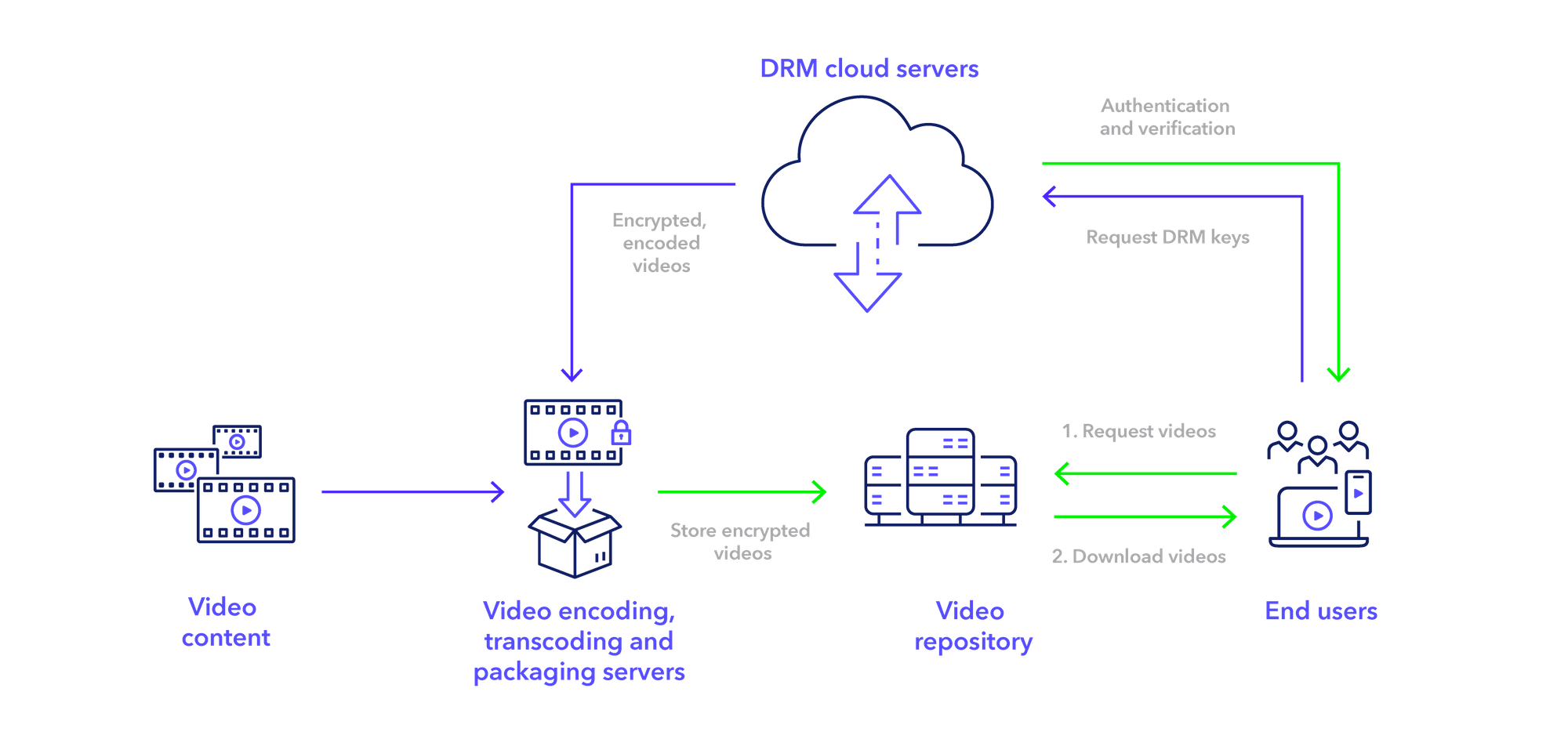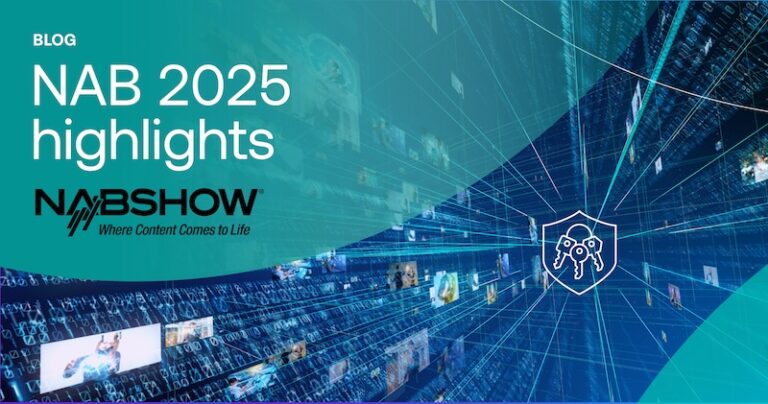The evolution and future of DRM
The rapid growth of digital content has made intellectual property protection more critical than ever. From streaming movies and music to e-books, gaming, and enterprise software, content creators and distributors must secure their digital assets against piracy and unauthorized access. This is where digital rights management (DRM) comes in.
DRM is a technology-driven framework that regulates access, usage, and distribution of digital content. It allows content owners to enforce copyrights, protect revenue streams, and control how content is consumed. Whether it’s setting time-limited access, restricting unauthorized duplication, or ensuring content plays only on verified devices, DRM acts as a digital guardian for premium content.
Think of DRM as the invisible security system behind your favorite streaming services like Netflix or Spotify. While users enjoy seamless access to content, DRM ensures that only authorized viewers get to stream a movie, listen to a song, or read an e-book. Without DRM, digital content would be easily copied, redistributed, or modified, making it impossible for creators and businesses alike to stay in business.
But DRM hasn’t always been seamless. Its journey has been marked by controversies, resistance, and technological advancements that have shaped its current form. Let’s explore how DRM evolved from rigid early implementations to today’s sophisticated, cloud-based solutions.
The early days of DRM: A necessary but controversial beginning
DRM’s origins trace back to the late 20th century, when the rise of digital formats—MP3s, DVDs, and software downloads—created a new wave of piracy challenges. In the early days, DRM was seen as overly restrictive and often frustrating.
One of the first major instances of DRM was in the music industry, where record labels tried to combat illegal file sharing. When Napster and peer-to-peer (P2P) networks exploded in popularity in the late 1990s, record companies scrambled to implement copy protection mechanisms. Their solution? Digital watermarking and CD-based DRM, which restricted how many times a song could be copied or transferred. However, these measures backfired, as DRM-restricted CDs were incompatible with many devices, leading to consumer outrage.
The film and software industries followed a similar path. DVD region coding ensured that movies released in one part of the world couldn’t be played on DVD players from another region. Meanwhile, software companies implemented product keys and license validation to combat piracy. Yet, hackers and digital pirates quickly found ways to bypass these restrictions, leading to an ongoing game of cat and mouse between content creators and cybercriminals.
Despite its flaws, early DRM laid the foundation for more sophisticated, user-friendly protections that would emerge in the digital streaming age.
The modern DRM landscape
Today, DRM has transformed into a seamless, cloud-powered security framework that protects content without disrupting user experience. Unlike early DRM methods, modern implementations are designed to be invisible yet highly effective, ensuring both content security and accessibility. The two core objectives of digital rights management are data protection and data governance. It achieves these objectives in four ways:
- Encryption – Valuable content is encrypted to prevent unauthorized usage and copying
- Governance – The encryption key is bound with a set of conditions that must be met to use the key
- Authentication – Once a user has been identified as meeting these terms their DRM client receives authorization to encrypt the content
- Enforcement – The user’s authorization is regularly checked to ensure they still meet the terms of the license

Traditionally, digital content has been protected with encryption. A digital rights management system, using a secret key, encrypts content to make it unwatchable so that only somebody who has the key can decrypt and watch it. But that key, like all digital information, is easy to copy and share so on its own it is not sufficient to protect the content.
Why multi-DRM?
To bolster content protection, business rules were added that define DRM policies, such as when and how the keys can be used. The enforcement of those rules upon the devices used to consume the content came next, and with it arrived our current digital rights management definition. However, as digital content consumption expanded across multiple platforms and devices, a single DRM solution became insufficient.
Different operating systems and ecosystems—such as Apple’s FairPlay for iOS, Google’s Widevine for Android, and Microsoft’s PlayReady for Windows—each adopted their own DRM standards, leading to compatibility challenges. Multi-DRM solutions emerged as the answer, giving content providers a DRM system that dynamically matches the user’s device, ensuring seamless access without compromising security.
Beyond ensuring compatibility, multi-DRM enhances security and scalability by adapting to the specific protection requirements of different content types. For example, high-value content like 4K UHD and HDR streaming often requires hardware-backed DRM for advanced security, while lower-resolution content may rely on software-based DRM.
By implementing a multi-DRM approach, content providers can streamline content distribution, prevent piracy, and maintain a high-quality user experience across all devices—without the complexity of managing separate DRM systems.
Future trends in DRM
As digital content continues to evolve, DRM must adapt to new challenges and technological advancements. Here are some key trends shaping the future of DRM:
1. AI-powered content protection
Artificial Intelligence (AI) is revolutionizing DRM by enabling real-time monitoring, piracy detection, and automated security updates. AI-driven algorithms can identify unauthorized access patterns, detect illegal content redistribution, and prevent content leaks before they happen.
2. Blockchain-based DRM
Some companies are exploring blockchain for decentralized digital rights management. Unlike traditional DRM, which relies on centralized servers, blockchain-based DRM uses smart contracts to authenticate users, track content access, and enforce licensing rules transparently and securely.
3. User-centric DRM models
Future DRM implementations are shifting towards more user-friendly and flexible models. Rather than strict content restrictions, companies are adopting token-based or subscription-based DRM, which allows users to access content across multiple devices while maintaining security.
Intertrust ExpressPlay
Intertrust has been at the forefront of digital rights management since its early days. Recognizing the need for a standardized and interoperable DRM framework, Intertrust co-founded the Marlin DRM specification in 2005, alongside industry giants such as Sony, Samsung, Panasonic, and Philips. This initiative laid the groundwork for a more flexible, scalable, and secure approach to DRM, ensuring that content providers could protect their digital assets without being locked into proprietary ecosystems.
Building on this legacy, Intertrust ExpressPlay™ DRM offers a comprehensive, multi-DRM solution that seamlessly integrates with Google Widevine, Microsoft PlayReady, and Apple FairPlay Streaming. This ensures that content owners can distribute their media securely across all platforms and devices, eliminating compatibility concerns.
Learn more about future-proofing your digital business, and discover how cloud-based scalability can combat piracy and unauthorized access like never before. Stay tuned for the next blog in this series to learn more about the features to look for when choosing a multi-DRM provider.








